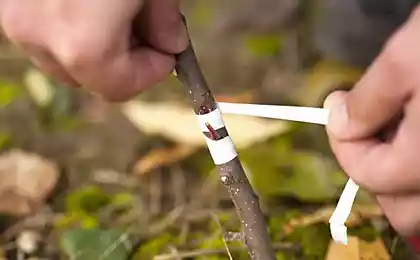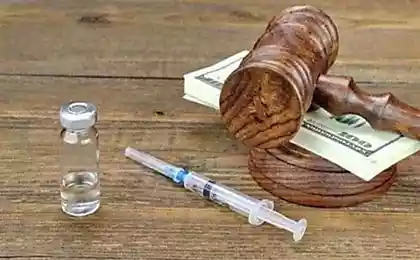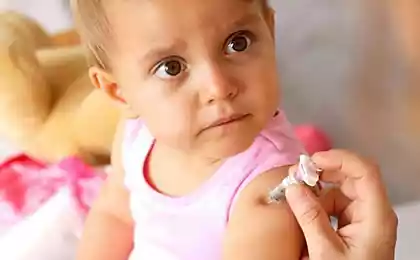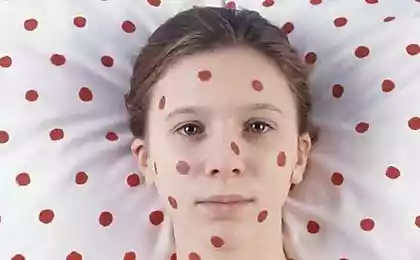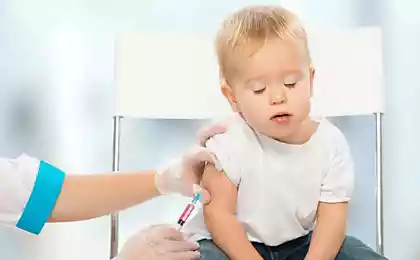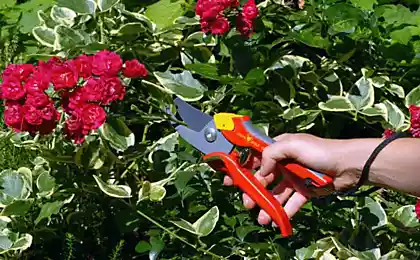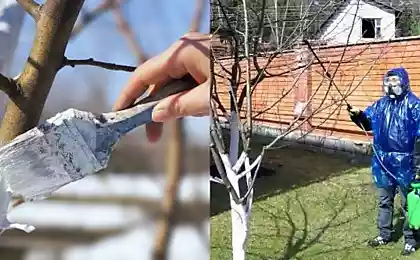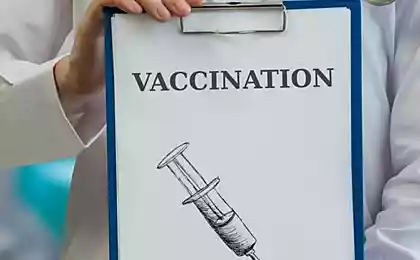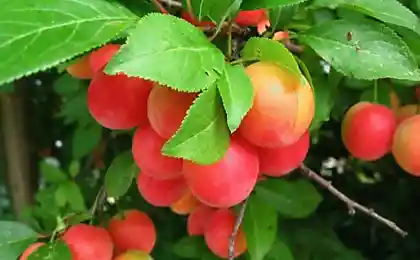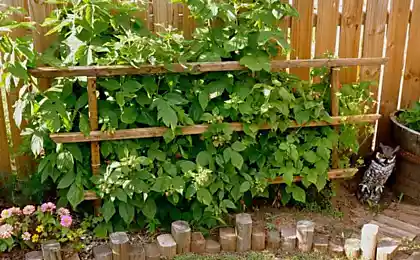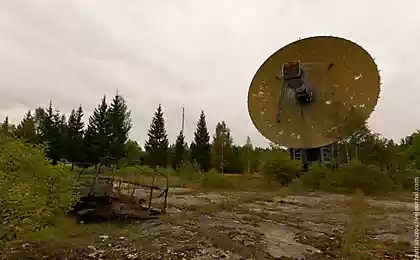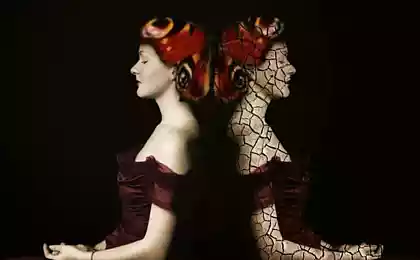301
What a gardener needs to know about vaccination
What does every gardener dream of? It is correct to have more crops and less problems. So that any variety you like would certainly become your own, and the trees in the garden would never grow old. And all this is completely doable if the owner of the garden is on "you" with a vaccination.
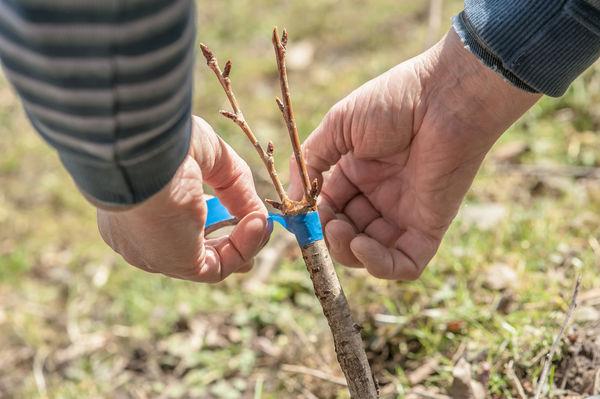
Have you ever planted trees? Do you know how to do that? Are you afraid you won't succeed? Then this article is for you!
What is vaccination and why it is needed in gardening vaccination name transferring a part of one plant to another plant for the purpose of their mutual aggregation. The result is a new unified organism, where the powerful root system of one parent begins to ensure the growth and development of the terrestrial part of the second. Moreover, this second is always a specially selected variety with the necessary qualities and characteristics.
You might ask, what is it for? And it turns out, grafting fruit trees can solve a lot of different problems in the garden plot:
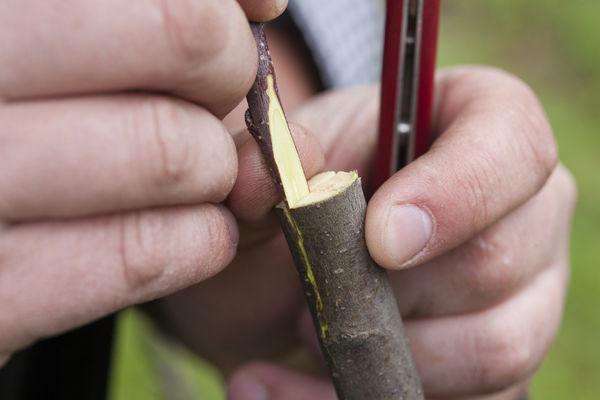
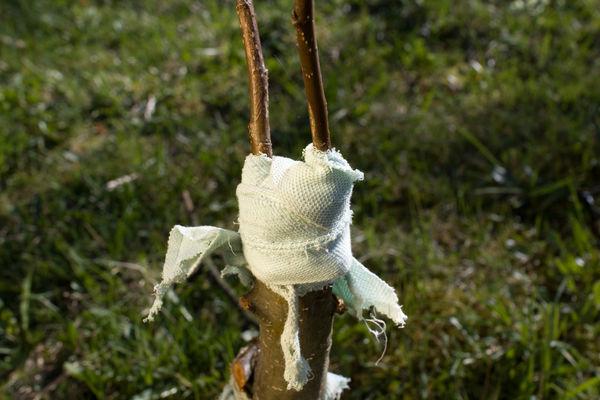
And besides all the beneficial changes in your garden, vaccination is also a fascinating activity. Here you will see: after the first results, you will be irresistibly “dragged” into this world of vaccinated man-made miracles.
Actors and performers In the sacred action called “vaccination” take part flux. basement and cambian. There is also a fourth character - a person, but about him later, and so far only about the main characters.
Tip.It is a part of a varietal plant that takes root on another plant. It can be a small fragment of the stem or even one kidney. The crop will form the upper part of the tree (bust) and "responsible" for its varietal characteristics.
Failure It is a plant or part of a plant on which the graft takes root. The swarm is the lower part, which will be responsible for nutrition, stability and adaptation to local conditions.
To avoid confusion, remember this:
The principle of vaccination is based on the ability of the tree to heal (grow) its wounds. Here, all the laurels belong to a thin layer of active cells. cambiaIt is located between the wood and the club.
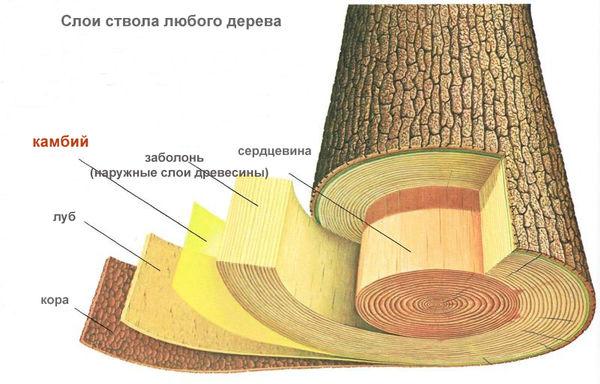
When vaccinated, specially made incisions (wounds) are superimposed on each other so that the exposed layers of cambia are combined. Tightly pressed against each other - and provide time for "relationship".
Both plants begin to actively heal wounds: on both sides of the cambia cells, actively multiplying, give inflows. callus (healing tissue). These oncoming influxes fuse together and form a new conductive tissue. That's the secret.
This is the basis for future vaccination. Through its root system will receive food and water, it will depend on the stability and durability of the tree, attitude to the soil and even yield. Therefore, the choice of stock should be approached with all responsibility.
Criteria for choosing a stock:
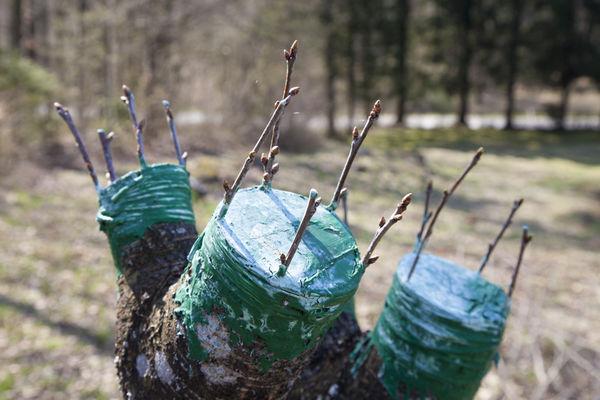
The rootstocks are divided into:
Depending on your goals, a rootstock can serve as a young tree or seedling, a wild root plant, a fruit tree of a disliked variety or a tree that you like, but for some reason is doomed (broken, for example).
You can dig a game in the forest or grow a seedling with your own hands. You can try to use even a healthy stump from a cut tree as a rootstock.
In the following video - a detailed story of the gardener Yevgeny Fedotov, whereinAnd how do they grow their own gardens?
The crop will form the upper part of the tree (bush), which is responsible for its varietal characteristics. It means that It depends on the quality of the fruit and its quantity..
Therefore, for vaccination, it is necessary to cut cuttings or buds (shields) from those trees that have already shown themselves “in all their glory” – both fruits and yields.

Harvesting cuttings for grafting is made several times during the year:
The most important condition for a qualitative and successful merging of rootstock and grafting is their botanical kinship (in other words, like-minded).
By the degree of such affinity are distinguished:
Vaccinations within the species are easiest, and the most difficult is between births.
399790
Long-term experience of vaccinations has revealed such interdependence:

True, our curious gardeners do not get tired of experimenting - do not give rest to the facts that in Bulgaria currant is grafted on cherry, and a neighbor on one tree flaunts apples and pears. .
Advice from experienced gardeners
Vaccination, as it turns out, is necessary. And important. It's not too complicated. I think we convinced you of that.
And you can start preparing for vaccination right now, because it is not too late to prepare cuttings for spring vaccination. published
Source: www.7dach.ru

Have you ever planted trees? Do you know how to do that? Are you afraid you won't succeed? Then this article is for you!
What is vaccination and why it is needed in gardening vaccination name transferring a part of one plant to another plant for the purpose of their mutual aggregation. The result is a new unified organism, where the powerful root system of one parent begins to ensure the growth and development of the terrestrial part of the second. Moreover, this second is always a specially selected variety with the necessary qualities and characteristics.
You might ask, what is it for? And it turns out, grafting fruit trees can solve a lot of different problems in the garden plot:

- Most importantly, delay First harvest. Trees grown from seed/bone will bear fruit no earlier than in 5-6 years, and mostly in 10-15 years. And grafted on an adult tree or on a 2-3-year-old seedling varieties can already please the harvest for 2-3 years.
- Vaccination will help quickly Getting the kind you like You see them in your home, and you see them in your home. And you don't have to buy a seedling, looking for this variety in all nurseries - just get a cutting from a favorite tree,
- With help. Vaccination of different varieties on the same tree You will significantly increase the variety of fruit crops in your garden, and at the same time save territory. On one tree of apple trees or pears, for example, you can have 3-4 different varieties, and on a wild plum you can grow at the same time plums, plums and even apricots!
- Vaccination provides an opportunity replace Unlucky (disliked, disliked) variety on a new, with better characteristics.
- It is possible to vaccinate Keep your favorite variety,If the tree stamp is injured (rodents, sunburns, errors in care), the tree is threatened with death.
- The vaccine will help to get valuable, but varieties not adapted to your conditions fruit. Even in the middle latitudes, you can take harvests from delicate southern crops if you plant them on local frost-resistant varieties.

And besides all the beneficial changes in your garden, vaccination is also a fascinating activity. Here you will see: after the first results, you will be irresistibly “dragged” into this world of vaccinated man-made miracles.
Actors and performers In the sacred action called “vaccination” take part flux. basement and cambian. There is also a fourth character - a person, but about him later, and so far only about the main characters.
Tip.It is a part of a varietal plant that takes root on another plant. It can be a small fragment of the stem or even one kidney. The crop will form the upper part of the tree (bust) and "responsible" for its varietal characteristics.
Failure It is a plant or part of a plant on which the graft takes root. The swarm is the lower part, which will be responsible for nutrition, stability and adaptation to local conditions.
To avoid confusion, remember this:
- fluxIt is a part of the plant that PRIEIt lives on another plant;
- basementlocated UnderHere we go.
The principle of vaccination is based on the ability of the tree to heal (grow) its wounds. Here, all the laurels belong to a thin layer of active cells. cambiaIt is located between the wood and the club.

When vaccinated, specially made incisions (wounds) are superimposed on each other so that the exposed layers of cambia are combined. Tightly pressed against each other - and provide time for "relationship".
Both plants begin to actively heal wounds: on both sides of the cambia cells, actively multiplying, give inflows. callus (healing tissue). These oncoming influxes fuse together and form a new conductive tissue. That's the secret.
This is the basis for future vaccination. Through its root system will receive food and water, it will depend on the stability and durability of the tree, attitude to the soil and even yield. Therefore, the choice of stock should be approached with all responsibility.
Criteria for choosing a stock:
- Compatibility with grafting
- Frost resistance
- Resistance to excess/lack of moisture
- Maximum adaptation to local conditions
- Strong root system

The rootstocks are divided into:
- Wild and cultural
- Seed and vegetative
- Strong and feeble
Depending on your goals, a rootstock can serve as a young tree or seedling, a wild root plant, a fruit tree of a disliked variety or a tree that you like, but for some reason is doomed (broken, for example).
You can dig a game in the forest or grow a seedling with your own hands. You can try to use even a healthy stump from a cut tree as a rootstock.
In the following video - a detailed story of the gardener Yevgeny Fedotov, whereinAnd how do they grow their own gardens?
The crop will form the upper part of the tree (bush), which is responsible for its varietal characteristics. It means that It depends on the quality of the fruit and its quantity..
Therefore, for vaccination, it is necessary to cut cuttings or buds (shields) from those trees that have already shown themselves “in all their glory” – both fruits and yields.

Harvesting cuttings for grafting is made several times during the year:
- For winter and springtime Vaccination cuttings must be harvested autumn, after the end of leaf fall, but before the onset of severe frosts.
- If the cuttings for some reason were not harvested in the autumn, then you can do it. latewinter orspring, until the kidneys swell.
- For summer grafting before the procedure. Here the main thing is that the base of the cutting was stiffened, and there were 2 formed kidneys.
The most important condition for a qualitative and successful merging of rootstock and grafting is their botanical kinship (in other words, like-minded).
By the degree of such affinity are distinguished:
- immunization- when grafted, for example, varietal cherry on cherry-dish;
- immunization - for example, inoculation of cherries on cherries, and plums on cherries;
- immunization - for example, grafting a pear on a quince, plums on an apricot, and peaches on a plum.
Vaccinations within the species are easiest, and the most difficult is between births.
399790
Long-term experience of vaccinations has revealed such interdependence:
- For stones Fruit trees are the best rootstock. Wild plums can also be used.
- Cherries and cherries You can graft on wild cherries and on one of the species of wild cherry - Antipka. In the North-Western zone for cherry seedlings Vladimir, Korostynskaya and other local varieties and forms or root offspring from them are considered successful. In the Central region of Russia for cherries can be used clone rootstocks Izmailovskaya (PN), Moscovia (P-3), AVH-2, VP-1, Rubin.
- Felt cherry You can graft on the Ussuri plum, on the squirrel, horn, less often - on the apricot.
- For an apple tree. The best rootstocks are seedlings of Antonovka, Anis varieties, as well as varieties resistant to local conditions. Often used breeding vegetatively and clonal rootstocks, such as A2, MM 106, 5-25-3, 54-118, M9, 62-396 and so on. A good stock will be the Chinese, or plum-leaved apple tree.
- For pears The best rootstocks will be the forest and Ussuri pear, as well as seedlings of the varieties Tonkovetka, Limonka, Alexandrovka, Vishnevka, which have good winter resistance. It should be remembered that the pear only accepts the pear. Although she is grafted on quince, and on an apple tree, and on aronia, and on a red ash. And Michurin generally grafted pear on lemon.
- For the plum.as rootstocks are most often used seedlings of local forms of plums. You can also use seedlings of thorny, as well as large-fruited forms of thorn. Vegetatively propagated rootstocks of Eurasia 43, SVG-11-19, BVA-1 will also be suitable. Nice rootstock.dwarfThere will be a thorn that has the greatest winter resistance.
- For apricots. The main rootstocks are apricot seedlings. Well-proven and seedlings ponds, less often use seedlings alychi, terna and cherry sand. But the apricots themselves (like peaches) are quite “unfavorable” rootstocks for all stones.
- For peach. as a rootstock suitable plum, plum, felt cherry, apricot, thorn and almonds (it is worth noting: vaccination of peach is a rather painstaking occupation. . . )
- Gooseberry You can graft on seedlings, root offspring and 1-2-year-old seedlings of golden currants. Gooseberry varieties grafted on golden currants will be distinguished by increased yield and drought resistance.
- For the ash. rootstocks are seedlings of ordinary ash, you can also graft the aronia and hawthorn.

True, our curious gardeners do not get tired of experimenting - do not give rest to the facts that in Bulgaria currant is grafted on cherry, and a neighbor on one tree flaunts apples and pears. .
Advice from experienced gardeners
- If you have chosen a candidate for a stock in the forest, dug up and brought to the country, then the transplanted tree should be given the opportunity root out in a new place. In a year or two, he could be a scumbag.
- If your chosen tree grows in the wrong place where you would like to have a new variety. first transplant it and give 1-2 years to root. And then you start getting vaccinated.
- If you want dwarfThen, do this: for an apple stock, use aronia (blackberry). For a pear, take either an irga or a quince, for a peach, choose an almond, and for a kumquat, a pomeranian will be a rootstock.
- When you choose a poultry and a crop, remember – they should be healthy and young! A sick tree spends its energy on its recovery, it does not have to splice. And in old trees, the process of cell division of cambia is no longer as fast as in young trees, so the process of fusion will be worse.
- Prix cutting Keep in mind that there are many flower buds on her annual shoots. So take longer shoots from younger trees (which have fewer flower buds).
Vaccination, as it turns out, is necessary. And important. It's not too complicated. I think we convinced you of that.
And you can start preparing for vaccination right now, because it is not too late to prepare cuttings for spring vaccination. published
Source: www.7dach.ru

